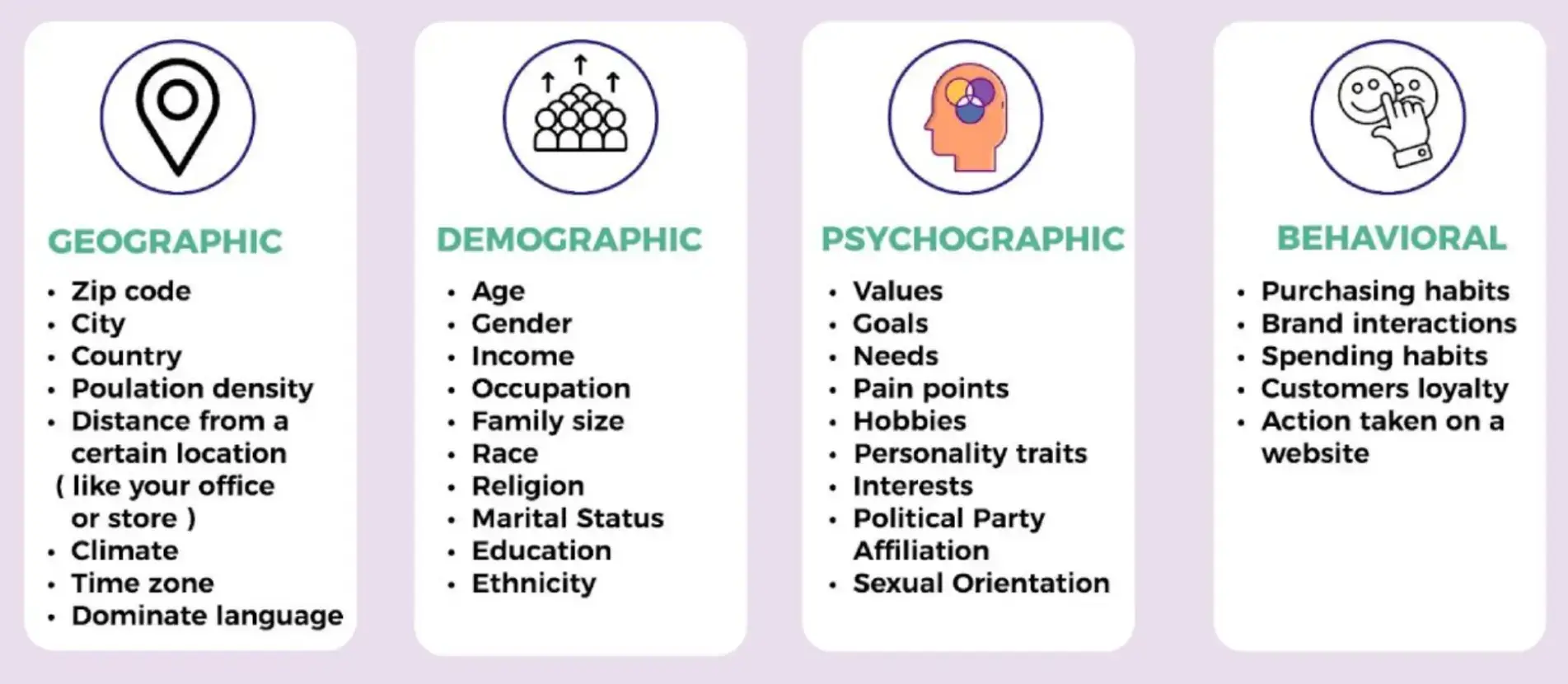Let’s face it: having a website is no longer enough. In today’s digital world, your website isn’t just a virtual business card—it’s your 24/7 salesperson, your brand ambassador, and your first impression all rolled into one. But here’s the kicker: if your website isn’t converting visitors into customers, subscribers, or leads, it’s not doing its job.
The good news? You don’t need to be a tech wizard or a marketing guru to make your website convert better. With a few strategic tweaks and a focus on user experience, you can turn your site into a conversion powerhouse. Let’s dive into some practical, actionable tips to help you get there.
1. Know Your Audience Inside and Out

Source: formstory
Before you can convince someone to take action on your website, you need to understand who they are, what they want, and what’s holding them back.
This is where creating buyer personas can be helpful. A buyer persona is a semi-fictional representation of your ideal customer based on real data and research.
Ask yourself:
- What are their pain points?
- What solutions are they looking for?
- What language do they use to describe their problems?
Once you have a clear picture of your audience, you can tailor your website’s messaging, design, and offers to resonate with them.
For example, if your target audience is businesses looking to become more efficient, you’ll want to emphasize convenience and time-saving benefits. If they’re tech-savvy millennials, you might focus on innovation and social proof.
2. Simplify Your Design
Ever landed on a website that felt like a maze of pop-ups, flashing banners, and confusing menus?
Yeah, it's not exactly a great user experience. A cluttered design can overwhelm visitors and make it harder for them to find what they’re looking for, let alone take action.
Here’s the golden rule: less is more. Keep your design clean, intuitive, and focused on guiding visitors toward your desired action. Use plenty of white space, clear headings, and a logical layout.
Your navigation menu should be simple and easy to use, with no more than 5 to 7 main categories.
Remember mobile users! Over half of all web traffic comes from mobile devices, so make sure your site is fully responsive and looks great on smaller screens.
3. Write Compelling Copy

Source: Hubspot
Your website’s copy is your chance to speak directly to your audience and convince them to take action. But no one wants to read a wall of text, so your copy needs to be clear, concise, and compelling.
Start with a strong headline that grabs attention and communicates the value of your offer.
Use subheadings to break up the text and make it easy to scan. And don’t be afraid to inject some personality into your writing—people connect with brands that feel human.
If you feel like the initial idea is long, don’t worry. You can always use a paraphrasing tool to tone it down, make it more engaging, or weave the tone in any way you desire.
Focus on benefits, not just features. For example, instead of saying, “Our software has a 99.9% uptime,” say, “Never worry about downtime again—our software keeps your business running smoothly, 24/7.”
4. Use High-Quality Visuals
A picture is worth a thousand words, and visuals can make or break a conversion on your website. Low-quality images, generic stock photos, or irrelevant graphics can make your site look unprofessional and untrustworthy.
Invest in high-quality visuals that align with your brand and resonate with your audience. Use images and videos to showcase your products, tell your story, or demonstrate how your solution works.
For example, if you’re selling a physical product, include multiple angles, close-ups, and even videos to give visitors a better sense of what they’re buying.
And don’t forget about your call-to-action (CTA) buttons! Use contrasting colors and clear, action-oriented text (like “Get Started Now” or “Download Your Free Guide”) to make them stand out.
5. Optimize Your CTAs

Source: bigfoot
Speaking of CTAs, they’re one of the most critical elements of a high-converting website.
A CTA is essentially a prompt that tells visitors what to do next—whether it’s signing up for a newsletter, requesting a quote, or making a purchase. To make your CTAs more effective:
- Be specific: Instead of “Click Here,” use something like “Get Your Free Trial.”
- Create a sense of urgency: Phrases like “Limited Time Offer” or “Only 3 Spots Left” can encourage visitors to act quickly.
- Place them strategically. Your CTAs should be easy to find and relevant to the page's content. For example, if you’re writing a blog post about your product's benefits, include a CTA at the end inviting readers to try it for themselves.
6. Build Trust with Social Proof
Let’s be honest: people are skeptical. They want to know that your product or service is worth their time and money.
That’s where social proof comes in. Social proof is evidence that other people have used and loved your offering, and it can be a powerful tool for building trust and credibility.
There are several ways to incorporate social proof into your website:
- Customer testimonials: Feature quotes from happy customers, along with their names and photos (if possible).
- Case studies: Share detailed stories of how your product or service helped a specific customer achieve their goals.
- Reviews and ratings: Display reviews from third-party platforms like Google, Yelp, or Trustpilot.
- Logos: If you’ve worked with well-known brands or been featured in reputable publications, showcase their logos on your site.
7. Invest in SEO and Digital PR
Sometimes, even the best landing page and the most engaging copy can be for naught if no one can find them. That’s why you need to prioritize getting a top 3 position for at least a couple of your main keywords.
While there are ways to do this with paid placements and expensive campaigns, you can also earn links by posting quality content and teaching your readers something new.
8. Test, Analyze, and Iterate
Here’s the truth: there’s no one-size-fits-all formula for a high-converting website.
What works for one business might not work for another. That’s why testing and analyzing your site’s performance is so important.
Use tools like Google Analytics to track key metrics like bounce rate, time on page, and conversion rate. Run A/B tests to compare different versions of your headlines, CTAs, or layouts. And don’t be afraid to make changes based on what you learn.
Remember, optimizing your website for conversions is an ongoing process. As your audience evolves and new trends emerge, you’ll need to adapt and refine your approach.
FAQ
1. What is website conversion, and why does it matter?
Website conversion refers to the percentage of visitors who take a desired action, such as making a purchase, signing up for a newsletter, or filling out a contact form.
Higher conversions mean more leads, sales, and business growth.
2. How can I improve my website’s conversion rate?
Focus on user experience by simplifying design, using clear CTAs, optimizing copy, and ensuring fast load times. Social proof, SEO, and A/B testing also play a crucial role in boosting conversions.
3. Why is mobile optimization important for conversions?
Over half of web traffic comes from mobile devices. A site that isn’t mobile-friendly can lead to poor user experience, higher bounce rates, and lost potential customers.
4. What role does SEO play in website conversions?
SEO helps drive targeted traffic to your website. Ranking for relevant keywords ensures that visitors are actively looking for your products or services, increasing the likelihood of conversions.
5. How can I test if my website is converting well?
Use analytics tools like Google Analytics to track key metrics such as bounce rate, session duration, and conversion rate. Conduct A/B testing on headlines, CTAs, and layouts to see what performs best.
Final Thoughts
Making your website convert better isn’t about flashy gimmicks or quick fixes—it’s about creating a seamless, user-friendly experience that guides visitors toward taking action.
By understanding your audience, simplifying your design, writing compelling copy, and continuously testing and refining, you can turn your website into a conversion machine.
So, what are you waiting for? Start implementing these tips today, and watch your conversions soar. Your website has the potential to be your most powerful marketing tool—make sure it’s working as hard as you are.


